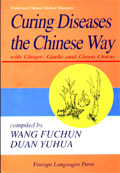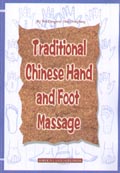Essentials of Traditional Chinese Pediatrics
Preface
Traditional Chinese pediatrics has made great contributions to the health of Chinese children for thousands of years. Essentials of Traditional Chinese Pediatrics systematically expounds the differentiation of syndromes and treatment of children' diseases. Chinese herbal medicine is the man method of treatment. In order to enhance the therapeutic effects, acupuncture and Chinese massage therapy are also introduced according to actual conditions.
This book is intended for those who are already practising Chinese herbal medicine, acupuncture and Chinese massage therapy and are somewhat familiar with the theory and practice of traditional Chinese medicine. Pediatricians of both Chinese and Western medicine, and acupuncture and massage practitioners will find this book a highly useful reference text.
December 1988
Nanjing College of Traditional
Chinese medicine
The Compilers
CONTENTS
Part One
Basic Knowledge of Traditional Chinese Pediatrics
Chapter I Characteristics of Children's physiology and Pathology
1. Physiological Characteristics
A. Deficiency of the Zang -Fu organs and the immaturity of the body and its functions
B. Vitality and rapid growth
2. Pathological Characteristics
A. Susceptibility to illnesses, which develop and change rapidly
B. Quick recovery of health due to cleanness of Zang Qi and rapid response to treatment
Chapter II General Description of the Four Diagnostic methods
1. Inspection
A. Observation of the expression and complexion
B. Observation of the appearance and body movement
C. Observation of the tongue, eye, mouth, nose, ear and anterior and posterior Yin (external genitalia and anus respectively)
D. Observation of the skin eruptions
E. Observation of the stool and urine
F. Observation of the capillary vessel of he index finger
2. Auscultation and Olfaction
A. The cry
B. The breathing
C. The coughing
D. The speech
E. Smells
3. Inquiring
A. Age
B. Present illness
C. Personal history
4. Palpation
A. Feeling the pulse
B. Palpation of certain areas of the body
Chapter III General Description of Treatment
1.Characteristics of Prescribing Herbs for Children
A. Treatment stops in the middle stage
B. Application of suitable forms of herbs
C. Dosage of Chinese herbs for children
D. Methods of administration
2. Characteristics of Acupuncture and Moxibustion Treatment for Children
A. Needling at the precise acupuncture points without needle retention
B. The needling sensation must be obtained
C. Mastering the needling techniques of reinforcing the deficiency, reducing the excess, clearing heat and eliminating cold
D. Commonly used methods of treatment of pediatric diseases
3. Commonly Used Methods of External Application of Chinese Herbs
A. Steaming and washing
B. Smearing and painting
C. packing
D. Hot compress
E. Plaster
F. Rubbing and cleaning
G. Sneezing
4. Other Therapies
A. Needling Sifeng (Extra.)
B. Incision
C. Spinal pinch method
D. Cupping
Part Two
Treatment of Diseases
Chapter I Common Diseases
1. coughing
2. Pneumonia
3. Asthma
4. Thrush
5. Vomiting
6. Diarrhea
7. Gan Syndrome (Malnutrition)
8. Convulsion
9. Epilepsy
10. Intestinal Parasites
11. Edema
12. Nocturnal Enuresis
Chapter II Seasonal Diseases
1. The Common Cold
2. Measles
3. Rubella
4. Scarlet Fever
5. Chickenpox
6. Mumps
7. Whooping Cough
8. Diphtheria
9. Epidemic Encephalitis B
10. Infantile Paralysis
11. Epidemic Toxic Dysentery
12. Summer Fever
Chapter III Neonatal Diseases
1. Jaundice of Newborns
2. Erysipelas
3. Tetanus Neonatorum
4. Disorders of the Umbilical Region
5. Sclerema Neonatorum
Appendix: Chinese Massage Therapy for children
Index of the Selected Recipes ad Patent Medicines
WRITE YOUR OWN REVIEW
How do you rate this product? *


